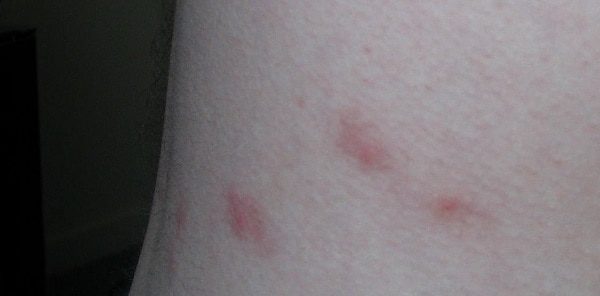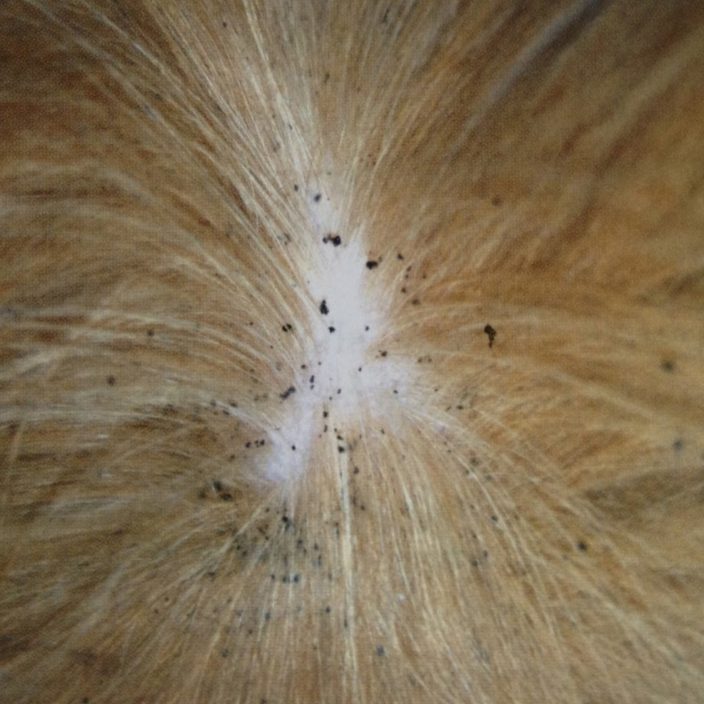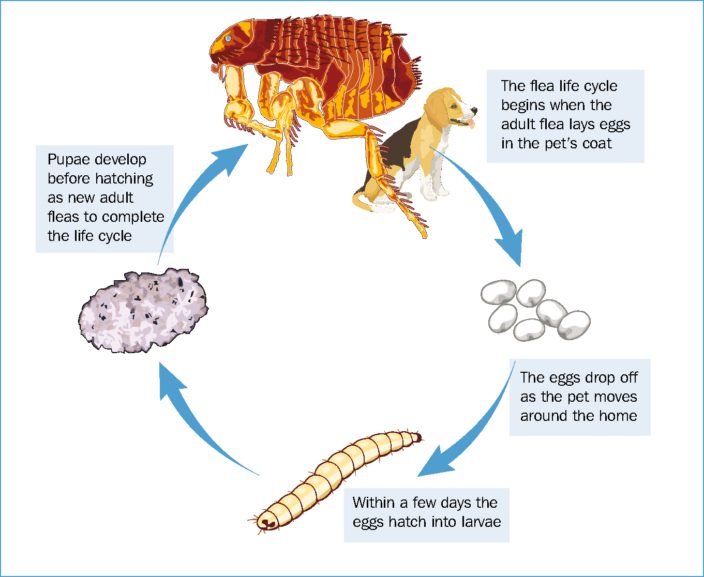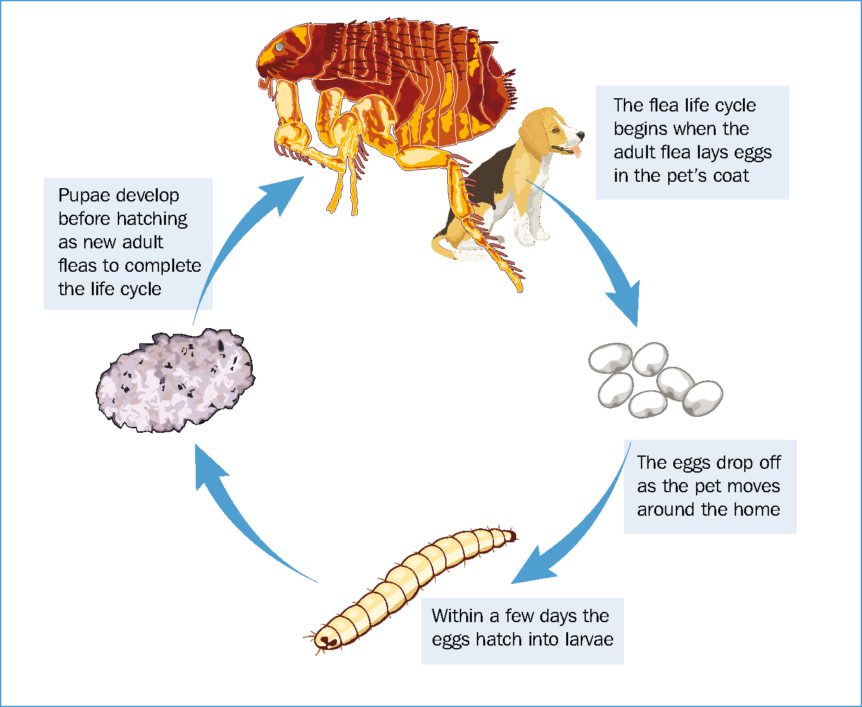You see a dog or cat scratching and what do you immediately think of? FLEAS!
They even bite people too, so you too end up with red flea bites and an insatiable itch. They usually leave 3 red bite marks together “breakfast, lunch & dinner”.
 It’s a gross and itch-inducing thought, but that likely means you have an infestation in your home? And to make matters worse this infestation can take up to 3 to 4 weeks to clear up.
It’s a gross and itch-inducing thought, but that likely means you have an infestation in your home? And to make matters worse this infestation can take up to 3 to 4 weeks to clear up.
That’s why when it comes to fleas, prevention is definitely better than cure!
Fleas are ectoparasites that feed on the blood of mammals or birds. They are specialised in one host species, but in a strong infestation, they can reproduce on other species. So, if you have a dog and a cat, they have two different types of fleas, but they can cross over and we commonly see cat fleas on dogs. They have strong legs for jumping, strong claws for piercing through skin and a flat body for easier movement in-between hair.
 Flea Dirt on a cat’s coat
Flea Dirt on a cat’s coat
Fleas have 4 life stages – egg, larva, pupa and imago (adult). There will be many more flea pupae, larvae and eggs in and around your home than actual adult fleas. In fact, only 5% of fleas can be found on your pet – which means the other 95% live in your home, tucked away, lurking in all of your dark nooks and crannies. They lay eggs on their host and in their environment (Yes, that means your house, kennels & yards) and it can take from 2 days to 2 weeks for the eggs to develop into larvae. Larvae feed on any organic material and do their best to avoid sunlight, keeping to humid, dark places (in carpets, backs of couches, behind curtains, in the crevices of wooden floors, etc). After three larval stages, they weave silken cocoons and metamorphose from the pupa to the adult form. To reach the full reproductive adult form (imago), pupae need to find hosts and feed on blood. The adults have deposited blood in their faeces on your pet’s coat, bedding etc. Adult fleas live for 2 or 3 months, but females can lay more than 5,000 eggs in that period.

The flea life cycle diagram
Fleas are now surviving the winter months in our homes, garages and sheds thanks to central heating and modern insulation.
The first thing you need to do if you spot fleas on your pet is to check if you are dealing with a live infestation.
You can easily check this using the ‘cotton wool test’
- Take a damp piece of cotton wool, and run it over your pet’s fur.
- If any dirt you pick up turns red, this means that you’re dealing with a live infestation, and those fleas are having a right good old chomp on your pet.
What to watch out for?
Symptoms can range from mild itching or scratching, to hotspots. Generally your pet becomes very itchy and their skin gets very red and inflamed. As a result of scratching and biting, hair loss can occur. In fact, several conditions may occur from the rise in flea infestations. Conditions such as, secondary infections with bacteria & yeast. Your pet can also develop dermatitis and flea allergy dermatitis. If the infestation is severe, it can even lead to anaemia in some cases. The body just can’t produce enough blood to replace the amount the fleas are taking.
Secondly, fleas, as other ectoparasites, can transmit diseases. They are vectors for viral, bacterial and rickettsial diseases for both animals and humans. Some of the best known diseases that fleas transmit are plague and tapeworms (which can have serious consequences for children in particular). Therefore, treating your pet for worms is a very important part of any thorough flea treatment protocol.
So, how do we get rid of them?
Each case is individual in terms of your pet’s reaction to the presence of fleas, and also your dog’s or cat’s lifestyle, which will often inform our decision as to what product is best for you and your pet. Just ask us at any of our four clinics, which flea treatment & preventative is best for your pet. In each clinic we have a wide variety of flea protection products which vary in length of cover, offering protection from fleas for either a month or up to 3 months.
Why should you always go with prescription flea treatments?
Some flea treatments only treat adult fleas as they bite our pets; they do not treat the larvae or pupae that will grow into adults in a matter of weeks, meaning your pet will continue to be infested. These are the most likely products you will find in shops and supermarkets.
Your vet can offer products that take care of fleas in all life stages. Products that remain in the skin cells, so that the larvae and pupae are eliminated as they mature into adulthood. Ask our vets which product offers the best protection for your pet.
By protecting your pet from fleas, you protect yourself and your family too.
Rockhall Veterinary
Gold Standard Flea Treatment
Right dose, right time
Follow the treatment guidelines as recommended by your vet.
Personalised to your pet
Personalised to your pet’s lifestyle and species.
Treat for fleas and ticks year-round
Thanks to central heating and modern insulation, fleas are now surviving throughout the colder months.
Groom your pet regularly
Grooming is a great way to spend quality time with your pet. It also helps you keep an eye out for any external parasites that may be hiding under your pet’s haircoat.
Get regular check-ups
One important thing your veterinarian does during your pet’s routine check-up is examine them for any signs of parasite problems to help ensure that the preventive product you are using is working effectively.
![]()

